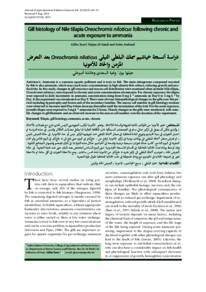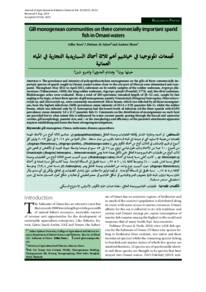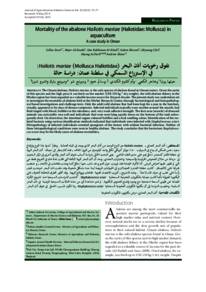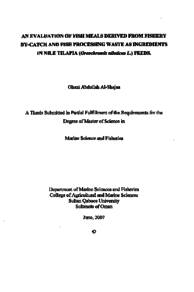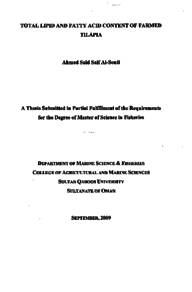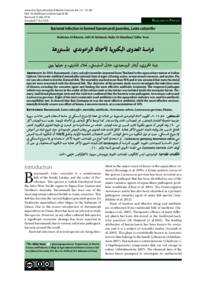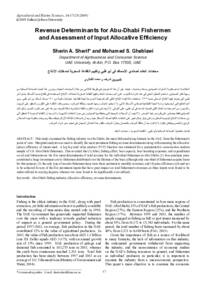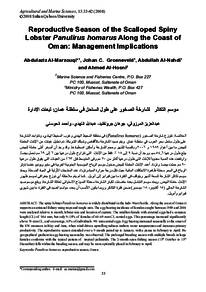Document
Gill histology of Nile tilapia Oreochromis niloticus following chronic and acute exposure to ammonia.
Contributors
Al-Saadiyah, Najiya., Author
Ambuali, Aisha., Author
Publisher
جامعة السلطان قابوس. كلية العلوم الزراعية والبحرية
Gregorian
2015
Language
English
Subject
English abstract
Ammonia is a common aquatic pollutant and is toxic to fish. The main nitrogenous compound excreted by fish is also ammonia, which may reach toxic concentrations in high-density fish culture, reducing growth and productivity. In this study, changes in gill structure and mucus cell distribution were examined when juvenile Nile tilapia, Oreochromis niloticus, were exposed to chronic and acute concentrations of ammonia. For chronic exposure, the tilapia were exposed to daily increments in ammonia concentration rising from 0 mg L-1 ammonia on Day 0 to 5 mg L-1 by Day 8; the experiment was terminated on Day 9. There were obvious histopathological changes to the gills over this period including hypertrophy and fusion and of the secondary lamellae. The mucus cell number in gill histology sections were observed to increase until Day 6 then decrease thereafter until the termination of the trial. For the acute exposure, juvenile tilapia were exposed to 5 mg L-1 ammonia for 5 hours. Hourly changes to the gills were monitored, with notable changes to gill filaments and an observed increase in the mucus cell number over the duration of the experiment.
Member of
ISSN
2410-1079
Resource URL
Citation
Yoon, G., Al-Saadiyah, N., & Ambuali, A. (2015). Gill histology of Nile tilapia Oreochromis niloticus following chronic and acute exposure to ammonia. Agricultural and Marian Sciences Journal, 20 (1), 66-72.
Arabic abstract
تعتبر الأمونيا من الملوثات المائية المعروفة والسامة للأسماك. وتعتبر الأمونيا المركب النيتروجيني الرئيس الذي يخرج مع فضلات الأسماك، والذي يمكن أن يصل إلى تركيز عالي سام في التجمعات السمكية ذات الكثافة العالية مما يقلل معدلات التكاثر والنمو. في هذه الدراسة تم اختبار التغيرات في بنية الخيشوم وتوزيع المادة المخاطية في صغار أسماك البلطي عند تعريضها لتركيز مزمن أو حاد للأمونيا. في حالة التعرض المزمن، تم تعرض صغار أسماك البلطي إلى زيادات يومية في تركيز الأمونيا ارتفع من 0 ملغ/لتر في اليوم حتى بلغ إلى 5 ملغ/لتر في اليوم الثامن وتم إنهاء التجربة في اليوم التاسع. كانت هناك تغيرات نسيجية مرضية واضحة في الخياشيم خلال هذه الفترة بما في ذلك تضخم وانصهار الصفائح الثانوية. وقد لوحظ زيادة عدد الخلايا المخاطية في أقسام الأنسجة الخيشومية حتى اليوم السادس لتنخفض بعد ذلك حتى عند نهاية التجربة. في حالة التعرض الحاد، تعرضت أسماك البلطي إلى تركيز قدره 5 ملغ/لتر من الأمونيا لمدة خمس ساعات. ومع ملاحظة التغيرات في كل ساعة تم ملاحظة تغير في مجموعة الخلايا في الخيشوم مع زيادة ملحوظة في عدد الخلايا المخاطية طوال فترة التجربة.
Category
Journal articles

